Saab is working on a supersonic, stealthy ‘loyal wingman’ type drone concept. The program has been running for some time as a company-funded effort but has gone largely unnoticed until recently. Ultimately, however, the appearance of such a drone concept is entirely in keeping with the company’s status as one of Europe’s active developers of uncrewed systems and could be indicative of what Saab offers its customers in the future.
Photos of the concept drone, developed under Saab’s Future Combat Air System (FCAS) program, have recently been doing the rounds on social media. At this point, it’s worth noting that the FCAS nomenclature is used by rival British and pan-European future air combat initiatives, each with a crewed fighter at its heart. Further confusing matters, Saab had previously been cooperating with the United Kingdom on its FCAS program, about which more later.
The most intriguing photos show wind-tunnel tests of a scale model for the Saab Loyal Wingman drone, which took place in December 2021.
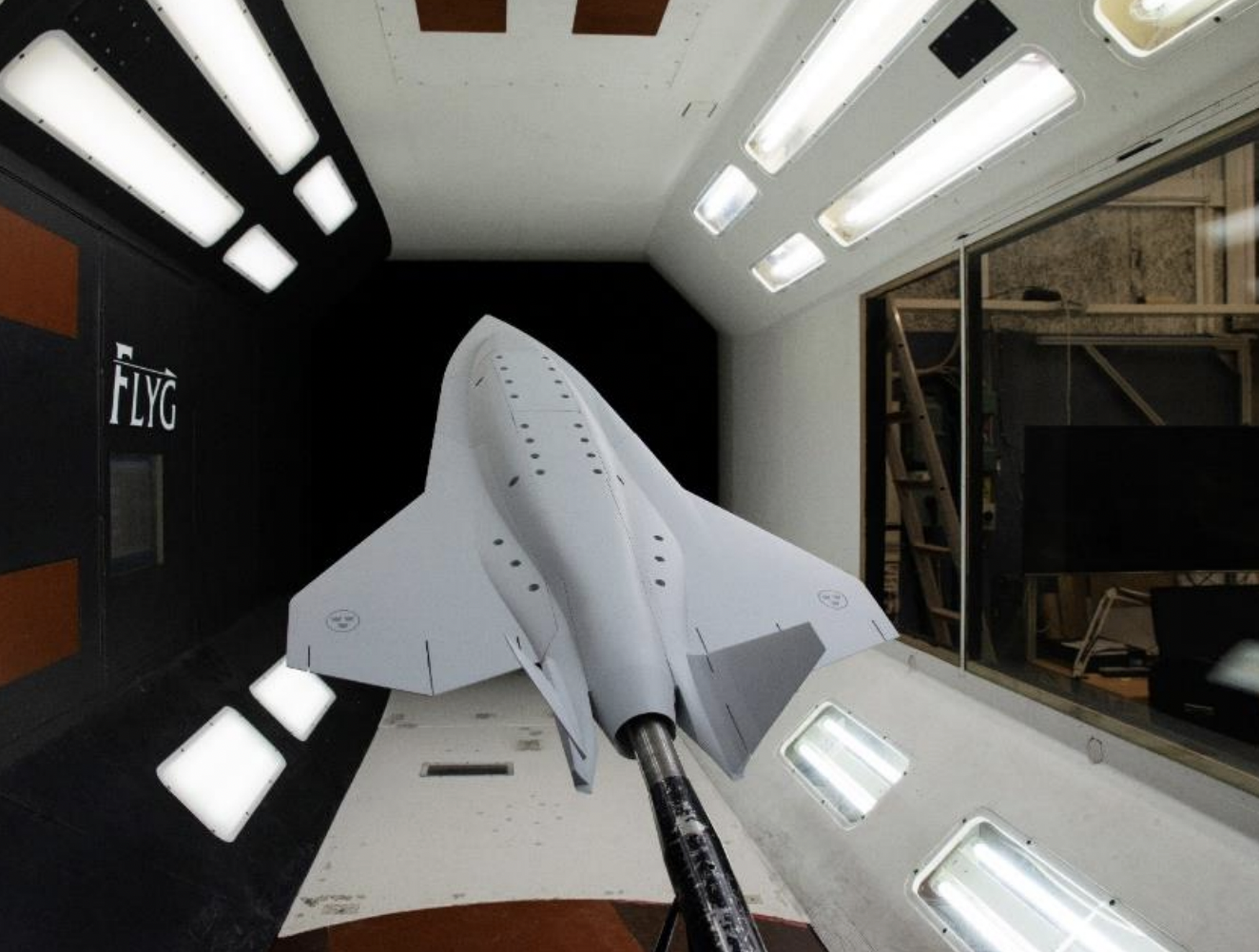
Unlike many such designs and concepts, the drone appears to have been tailored for high speed, in the supersonic regime, as well as low observability. It has a sleek, blended wing/body configuration with a prominent chine running around the arrow-like forward edges. The cropped swept wings have prominent sawteeth on the trailing edges and appear to be equipped with relatively very large control surfaces. The fuselage appears to have area rule optimization for supersonic efficiency.
The concept also features a single engine, fed by a low observable dorsal air intake above the forward fuselage (covered for the wind tunnel model tests). Although the nozzle area on the model is notably un-stealthy, it may receive future refinements, something that’s not unheard of with low-observable designs. On the other hand, the nozzle may simply lack detail since it may have been considered unnecessary for the wind tunnel tests. Still, it is relatively well buried in the empennage, giving it line of sight cover from certain aspects.
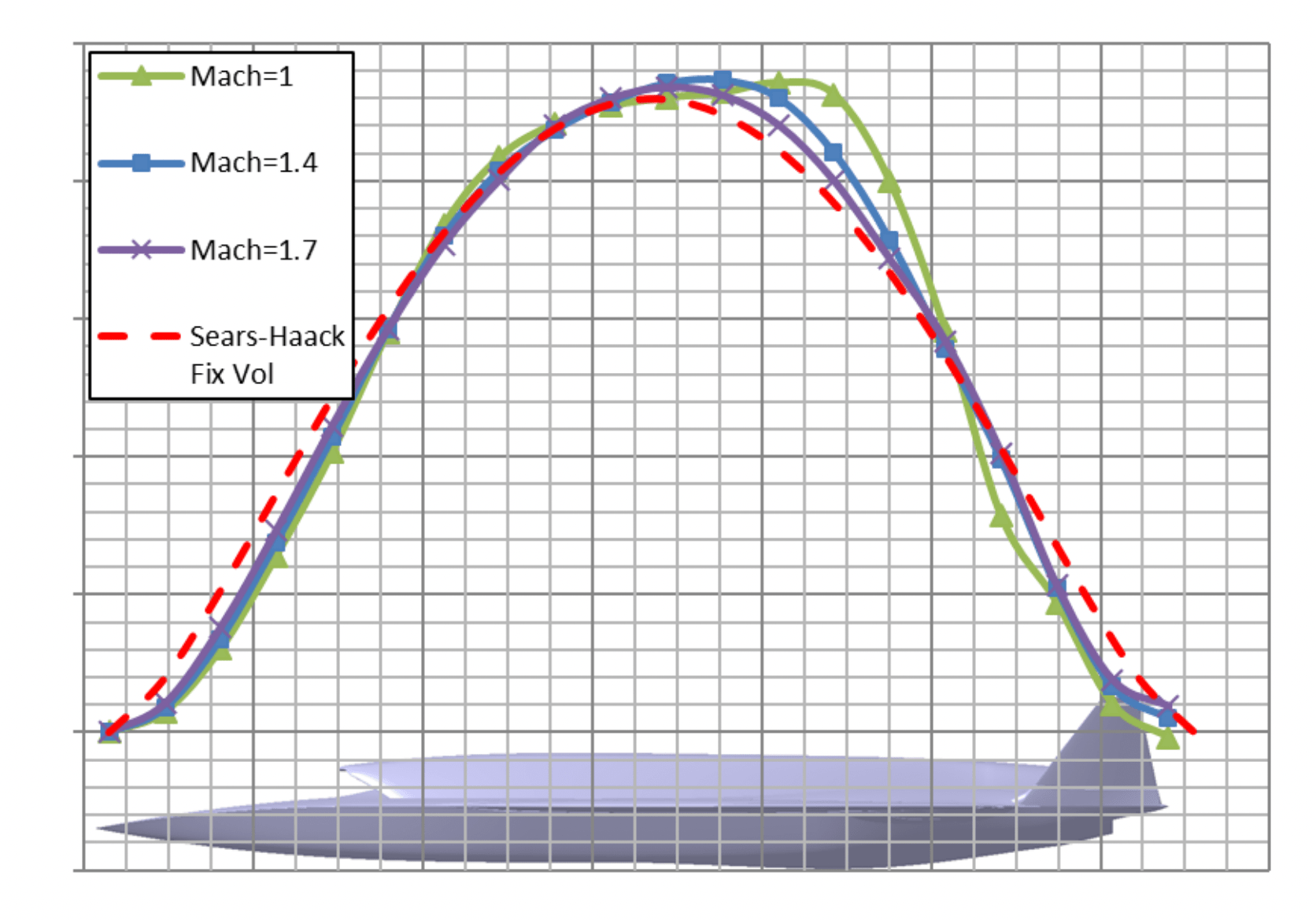
Typical for low-observable aircraft, the drone has outward-canted vertical fins mounted on booms protruding on either side of the rear fuselage, and there are no conventional horizontal tail surfaces.
A view of the model from below confirms that the drone is intended to have considerable internal space for the carriage of weapons. Long store bays are located on either side of the fuselage, concealed by large, single-piece doors.

Further illustrations reveal conventional wheeled tricycle landing gear that retracts into the fuselage.
Saab’s loyal wingman concept broke cover at least as long ago as September 2022, when it was presented as part of an academic paper at the 33rd Congress of the International Council of the Aeronautical Sciences (ICAS), which took place in Stockholm, the Swedish capital.
At this point, the focus appears to have been on the aerodynamic development of a supersonic, stealthy loyal wingman concept, as part of the early stages of the design, something that would have been conducted in the wind tunnel, as well as using computer simulations.

According to the Saab paper, accelerating the design process was a cornerstone of the program at the time, making use of “various levels of Computational Fluid Dynamics tools and wind tunnel testing with extensive additive manufacturing techniques.” Additive manufacturing uses computer-aided design (CAD) software or 3D object scanners to create precise geometric shapes, a process commonly known as 3D printing.
The Saab paper explains that the company’s FCAS effort has involved a “continuous study of new concepts, and evaluation of their operational effectiveness in different scenarios,” with the supersonic, stealthy loyal wingman having “matured a lot further than [some] others.”

While the paper primarily deals with the concepts behind the rapid, low-cost aerodynamic development, there are a few interesting tidbits that shed light on the actual loyal wingman design.
“The Saab Loyal Wingman concept is designed to a requirement profile with focus on low radar signature, high speed and beyond visual range air-to-air missions,” the paper’s authors explain. “This requires low supersonic drag and internal weapon bays, which is somewhat opposed since low supersonic drag is accomplished with a slender layout, and internal weapon bays typically result in the opposite.”
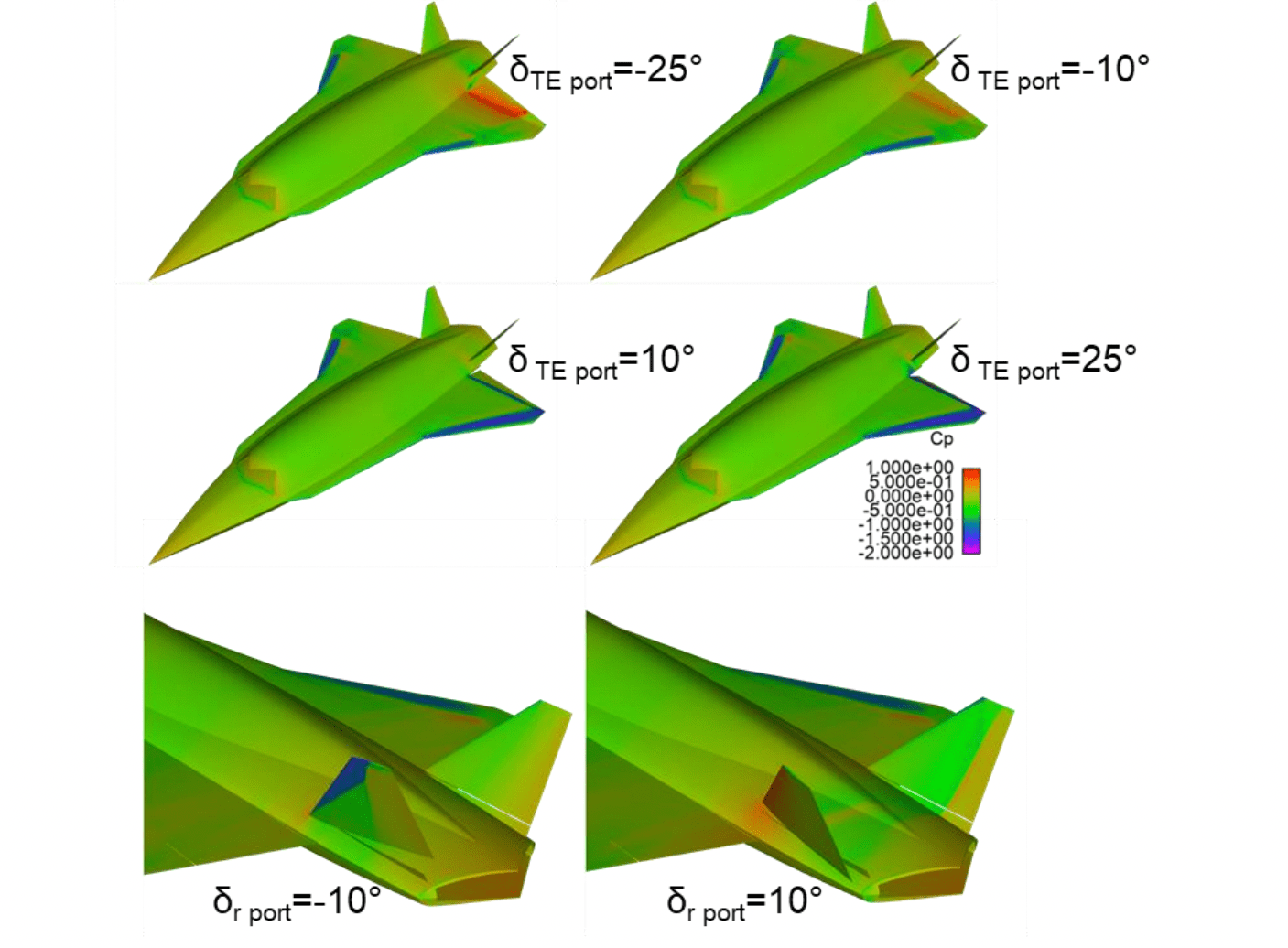
The aerodynamic design process also involved changes to the wing planform, before arriving at that which we see on the wind-tunnel model.
The evolution process is seen in Figure 4, below, starting with more significant variations toward the bottom and gradually refined shapes toward the top. “Shape evolution that can be seen between the different baselines is driven by more than aerodynamic considerations like radar signature, structural layout, and internal packing,” the report states.

Ultimately, the report notes that the aerodynamic development study of the Saab Loyal Wingman drone proved that “A wind tunnel test can be successfully executed in the limited time frame and on the limited budget that exists in typical project initiation activities within Saab.”
But there remain tantalizing questions about the broader status of the Saab Loyal Wingman, Saab FCAS, and future combat aircraft requirements within the Swedish Air Force. (It is perhaps notable that the wind-tunnel model features the ‘three crowns’ roundel of the Swedish Air Force on its airframe).
Back in 2019, it was announced that Saab had formally joined the U.K.’s Team Tempest future combat aircraft program, alongside Italy’s Leonardo in a bid to share costs and bring a wider knowledge base into the project. Subsequently, Japan also joined the wider British FCAS effort, which includes the Tempest fighter, and which is now known as the Global Combat Air Program (GCAP). This aims to have a sixth-generation air platform in the air by 2035.

While Sweden had been one of the nations to show considerable interest in the British-led program back when it was still widely known as FCAS, in November 2023 the country confirmed it was no longer involved in Tempest, and it’s also no longer being mentioned in relation to GCAS.
It might be possible for Sweden to rejoin GCAS, through Saab, at some point in the future, or it might be the case that it could team up with the rival pan-European FCAS.

Both those future combat aircraft programs aim to field a range of complementary technologies, among them loyal wingman drones and a new generation of air-launched weapons, not to mention sensors, engines, as well as data-sharing capabilities and communications architecture.
So far, however, details of potential loyal wingmen have been limited and there certainly does not seem to be mention of a supersonic drone adjunct like that studied by Saab.
A supersonic, stealthy loyal wingman would appear to fly in the face of ideas of “affordable mass” that are currently on trend in this area. The idea is that loyal wingman drones should be inexpensive enough for combat commanders to be willing to lose them on high-risk missions while being capable enough to be relevant for those missions. Still, even the USAF’s own loyal wingman effort is shifting to higher-performance, at the top-end of the proposed cost spectrum. You can read all about that here.
The Saab Loyal Wingman design, as it now stands, would appear to be an even more costly and complex solution than the kinds of drones that have typically been proposed for working closely together with crewed platforms, initially primarily in air-to-air combat roles.
But in just such a role, the Saab Loyal Wingman could be a very potent addition to combat air forces operating either fifth- or sixth-generation fighters, but also fourth-generation ones, as Sweden does.

Extrapolating that, and as we have discussed repeatedly before, one could argue that 4th generation fighters like Gripen could benefit from advanced loyal wingmen drones even more than 5th or 6th generation types. Pairing the two together would breathe entirely new life into the 4th generation fighter and would give them a stealthy, penetrating capability via their loyal wingmen drones, as well as greatly expanded tactical flexibility, increased awareness, and drastically enhanced survivability. One may also be able to argue that with high-end, largely autonomous uncrewed wingmen, more advanced crewed fighters may not be needed for the vast majority of missions.
In other words, SAAB could pair its Gripen E/F with something like the drone seen in the test to give Gripen vastly enhanced capabilities at a lower cost as compared to buying highly advanced, stealthy, manned fighters and training pilots constantly to fly them.
At the same time, Saab claims to be at the forefront of digital design, agile software, and digital engineering technologies that promise to not only reduce the time between drafting an aircraft and getting it into the air for testing, but also to reduce costs. This has been a core tenet of the Boeing/Saab T-7A Red Hawk advanced jet trainer, although this concept remains fairly unproven in this domain and has also its fair share of prominent detractors.
Unlike many other Western European air forces, Sweden has yet to embark on the acquisition of a fifth- or sixth-generation fighter. Instead, it will rely for the foreseeable future on 60 new-generation Saab Gripen Es, as well as having decided to retain its older Gripen C/D fleet for longer. The Gripen E is a substantially different aircraft to the Gripen C/D, as you can read about here, but both are non-stealthy, fundamentally fourth-generation fighters.
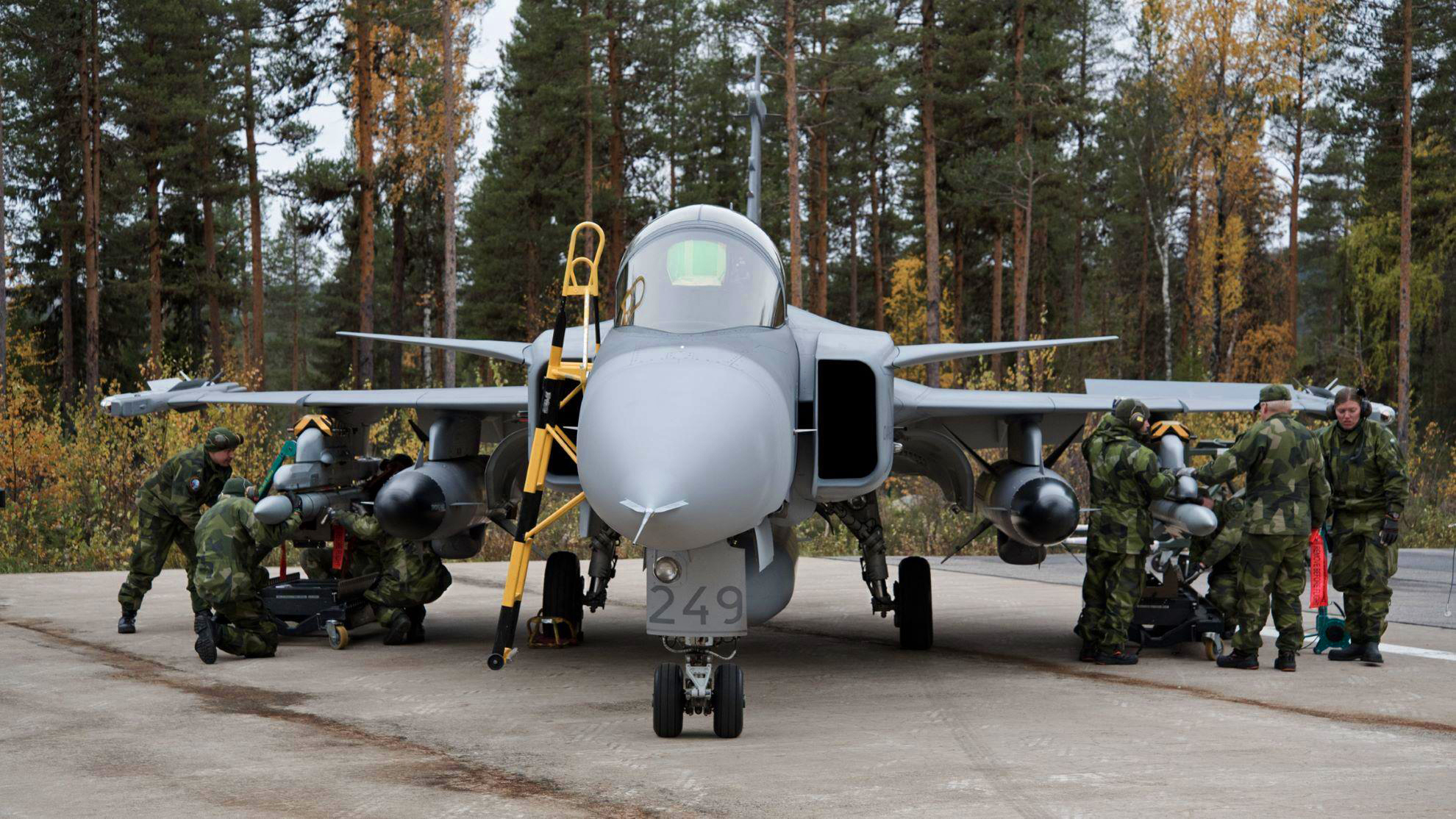
As explained above, having a stealthy, supersonic drone that could work with the Gripen, especially the latest Gripen E with its more powerful suite of sensors, could be a huge benefit.
In an air-to-air capacity, especially when armed with the same Meteor beyond-visual-range air-to-air missiles as the Gripen, the crewed fighters, as well as airborne early warning and control aircraft and other assets, could provide targeting cues to the loyal wingmen, allowing them to perform engagements without having to use any of their own sensors and potentially reveal their presence. The opposite set of tactics, where the drones provide the targeting information to the manned fighters, could also have great benefits. Having drones of this kind that could operate in conjunction with crewed aircraft would also simply increase the number of available missiles, for a valuable boost in ‘magazine capacity.’

In an air-to-surface role, a Saab Loyal Wingman drone would be able to penetrate further into more contested airspace, perhaps flying autonomously, semi-autonomously, or otherwise working in close conjunction with Gripens and other assets.
In a defense-suppression capacity, it can be imagined that such a drone would be especially highly prized, being able to approach closer to hostile air defense systems before being detected and potentially also attacking these kinetically or via electronic warfare capabilities.
Sweden, perhaps more than any other country, has a well-established system of datalinks connecting crewed fighters, as well as other platforms. A Swedish fighter-to-fighter datalink was already fielded at the beginning of the 1980s in the Saab Viggen.
“The idea came from being outnumbered by an opponent, so we created it as a force multiplier in order to share information — to see what your wingman sees,” Saab Gripen E test pilot Robin Nordlander told The War Zone. “This created a tactical behavior and a lot of experience which has helped us to create a system that is able to cope with a far more complex tactical situation.”
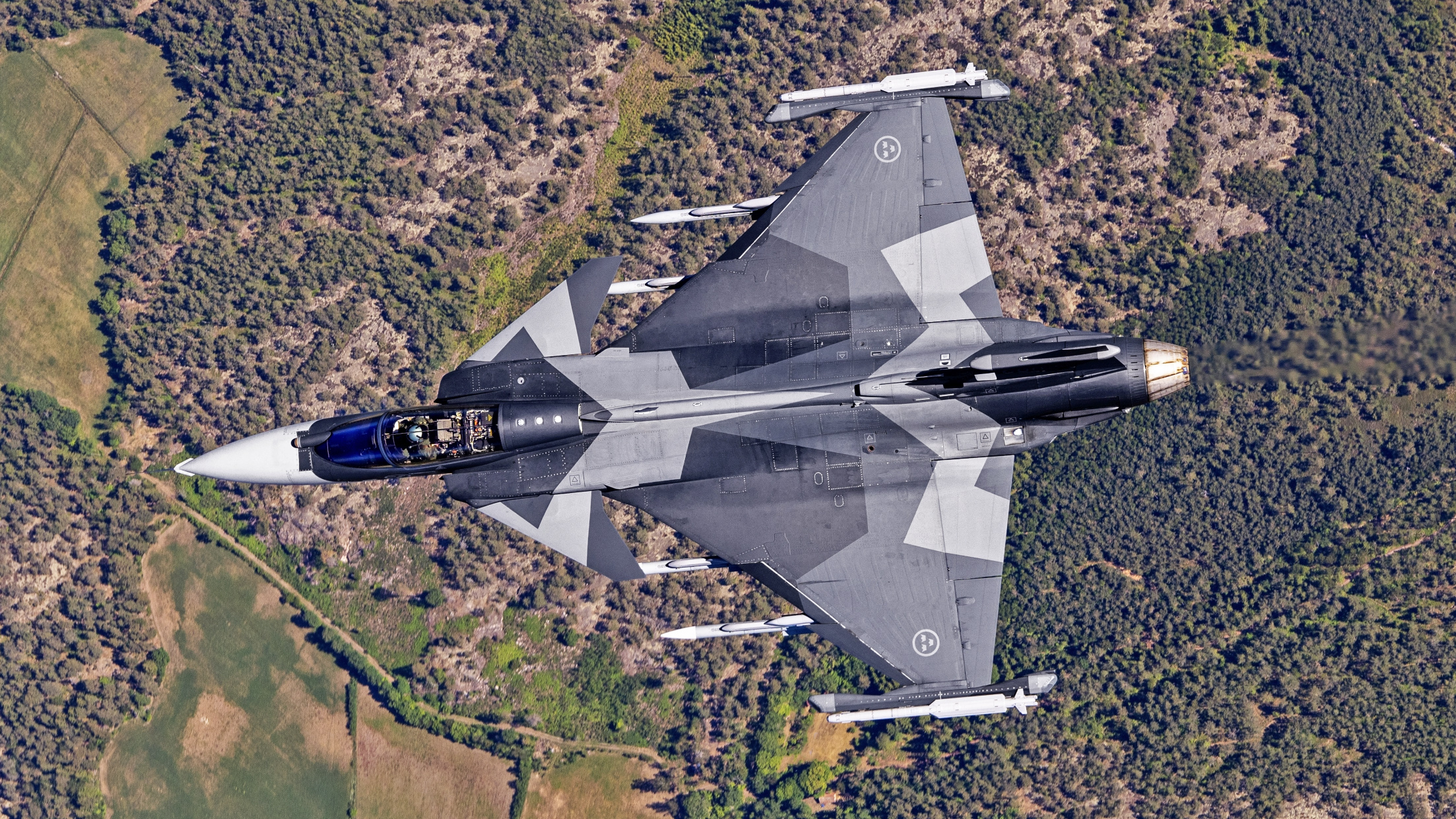
Innovative use of sensors — including radar, infrared search and track, and electronic warfare systems — and how the resulting data is shared is fundamental to Swedish Air Force operations. In such a set-up, in which remaining electronically silent is highly prized, a stealthy drone could well be a natural addition. Having supersonic ability would not only enhance its survivability in many scenarios, but would also ensure it can reach the target area or specific threat quicker than other loyal wingmen might.
It is worth noting that at least one other European combat drone claims supersonic performance (or at least will do, in later versions), and has already taken flight. This is the Turkish Baykar Kizilelma, which has a limited degree of reduced-observable characteristics, and is also tailored for the kinds of air combat missions typically undertaken by crewed fighters.

With its Swedish Highly Advanced Research Configuration (SHARC), an experimental drone, as well as its involvement in the French Dassault nEUROn, Saab has already gained considerable experience in stealthy drone designs. It is highly interesting, to say the least, that the company has now for some years also been looking at combining real high-end performance with low-observable attributes, potentially opening the way to a new kind of loyal wingman.
Contact the author: thomas@thewarzone.com
